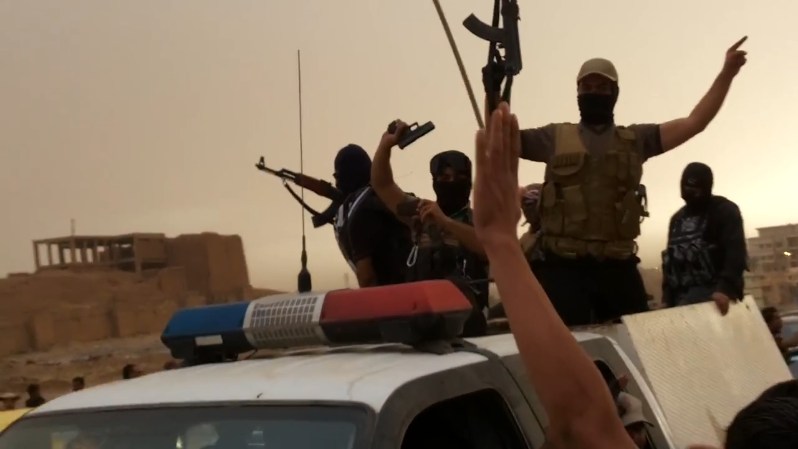Understanding the Situation in Iraq

Recent advances in Iraq by the al-Qaeda clone known as the Islamic State of Iraq and Sham (ISIS) have raised fears that the entire country could fall to extremists. Although the collapse of security throughout much of Iraq seems sudden, it did not spring from a void, but rather is the result of a return of sectarianism to Iraq and of the steady growth of ISIS over the past two and a half years.
After being suppressed by a U.S. counterinsurgency in 2007-2010, the group—then an al-Qaeda-affiliated group called the Islamic State of Iraq (ISI)— reemerged when the U.S. withdrew its military from Iraq in 2011. The rise of ISI was aided by the destabilization of the precarious sectarian balance in the country, which could not be maintained without the calming presence of the U.S., perceived as impartial by both Sunnis and Shi’a. ISI seems to have been able to take advantage of the fears of Sunnis to win over recruits and reports of the return of the group surfaced throughout 2012 and 2013. There was also a steady increase in terrorist violence and mass prison breaks that released hundreds of hardened insurgents.
By the end of 2013, the violence had evolved into a full-scale insurgency, shown most clearly by the fall of Fallujah into the hands of the now renamed ISIS and the reestablishment of an extremist “wilayat” or province, in Diyala. It is this context that allowed ISIS to take Mosul, Tikrit, Tal Afar and other major cities in short order, putting a large percentage of Iraq under the influence if not outright control of the extremists.
There are three issues that will affect further developments in Iraq and the region. Of first importance is the nature of the group that is leading the charge in Iraq. After the split that developed between ISIS and al-Qaeda last year, culminating in the mutual disassociation of the groups earlier this year, two hopes were expressed by experts: that al-Qaeda might be eclipsed by ISIS as the new leaders of the jihadist movement, and also that the infighting between the two groups might lead to a reduction of attacks directed against outsiders as the organizations fought each other rather than the U.S. or local governments. This latter hope has been shown to be false, but the former is misleading as well. If the militants ravaging Iraq are indeed members of ISIS, the group will make a bid for further power and influence within the jihadist movement, leading to more—not less—violence throughout the region. ISIS is more ideologically extreme and far more dangerous than al-Qaeda, both because it is bent on sectarian war and because it carries out its attacks with a viciousness that even repelled al-Qaeda. During the earlier phase of the insurgency in Iraq, Zawahiri and another al-Qaeda leader known as Atiyah wrote lengthy condemnations of the gratuitous violence committed by their Iraq affiliate and attempted—to no avail—to rein in its bloodshed. In pursuit of the creation of an expansive Islamic state—a goal it shares with al-Qaeda—ISIS is also already spreading to nearby countries. All of this implies that any empowerment of ISIS in Iraq will lead to even more chaos and bloodshed.
Secondly, it appears that the Iraqi government is no longer dealing with a purely guerrilla enemy. Images from Iraq show large numbers of motorized forces parading under the flag of ISIS and the use of tanks in Mosul by the extremists, while many heavy weapons left behind by the U.S. have fallen into the hands of the insurgents. This suggests that ISIS and the militants fighting with it have evolved on the Maoist scale and are able to carry out a higher form of warfare. Mao worked out a three-phase vision for insurgency that began with preparation and focused attacks, transformed into guerrilla warfare, and ended with the development of a conventional army capable of taking cities. The fact that ISIS has been able to use its mobile forces to quickly seize numerous cities and hold them, might be telling us that the insurgency has developed beyond guerrilla warfare and that ISIS is now in command of a conventional force. Meanwhile, a video showing the movement of large amounts of heavy weaponry to Syria suggests that ISIS is planning on using their conventional forces against Assad as well as Maliki. This is important for many reasons, not least because it might be that ISIS is developing capabilities that will allow it to stand up to the intervention of regional powers like Turkey or Iran.
This brings us to the final issue. The appearance of at least some Iranians in this volatile situation could herald the spread of sectarian war across the region. The war inside Iraq has already taken on a sectarian character, but a full-scale intervention by Iran would convince neighboring states that they too need to intervene to support their sectarian brothers. The entire region, from the Arabian Peninsula to Lebanon to Iran, could be drawn into warfare with no quarter shown by either side, a warfare that can only benefit the extremists. This is, indeed, the vision that ISIS has had for the area since the group’s foundation, a vision that now seems within reach.
